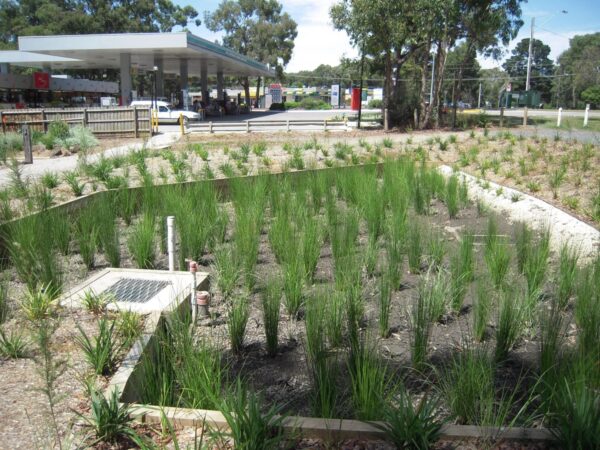Catching urban runoff in raingardens and rainwater capture tanks improves the water quality of nearby streams and rivers and lowers water temperatures that have risen in the region due to climate change and the urban heat island effect, according to a new report spanning two decades.
When natural landscapes are replaced with urban infrastructure environments, the temperature of an area also increases, a phenomenon known as the urban heat island effect. As water runs through urban areas with impervious surfaces, it picks up pollutants and heat before discharging into waterways. The compound effects of urban expansion and climate change in the study region have increased the water temperature of nearby streams by as much as 5 degrees Celsius (9 degrees Fahrenheit).
Raingardens and rainwater tanks were able to restore degraded streams by filtering and cooling runoff before it entered the waterway, according to the study in Water Resources Research. Green stormwater infrastructure reduced the steams’ peak summer temperatures by about 5 degrees Celsius (9 degrees Fahrenheit), effectively counteracting the regional warming. (photo: The University of Melbourne)
These catchment systems also filtered runoff from human activities, such as car washing, spilled gasoline, sewage, fertilization and irrigation, and prevented excess nutrients from entering the stream ecosystems.
The study, one of the longest and largest to be completed on green stormwater control measures, found that raingardens and rainwater capture tanks were effective at reducing water temperatures and pollution in nearby streams at least 90% of the year.
The news release from PhysOrg can be found here and the full journal article in Water Resources Research can be read here.

No Comment